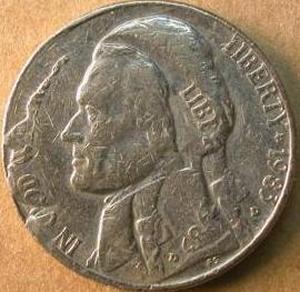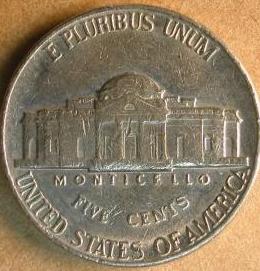Pivoted Die Error
Any lateral misalignment greater than 10% is likely to involve the entire die assembly. There just isn’t enough play in the hammer die’s recess to allow this sort of lateral movement. Even if there was, the die would surely fall out. It may be that most horizontal misalignments have nothing to do with a loose die and everything to do with an unstable die assembly
If major horizontal misalignments can be caused by movement of the entire die assembly, then other sorts of lateral movements are also possible. This 1983-D nickel shows a normal first strike and a possible pivoted die error on the second strike. The obverse die was shifted to the left about 30% and rotated perhaps 20 degrees. While this could be a combination of a horizontal misalignment and a rotated die error, it could represent a single movement of the hammer die assembly — a pivot.
In a pivoted die error, the obverse die seems to rotate around a vertical axis that runs along the side of the die shaft and may even occupy empty space lateral to the die shaft. In actuality, the entire die assembly is pivoting.

